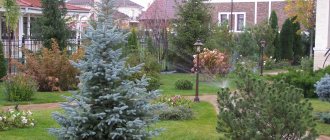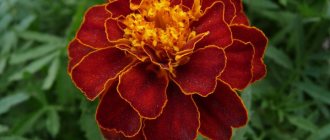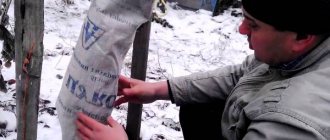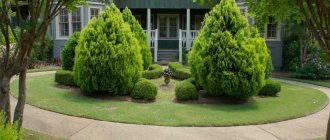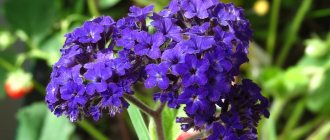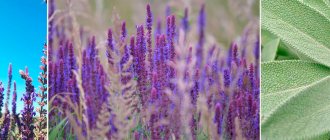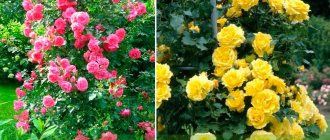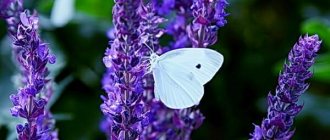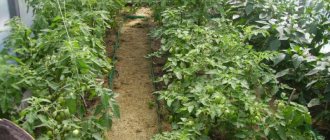Growing garden plants is not only fun, but also good for your health. In case of stressful situations, it is enough to switch to caring for them and devote yourself to gardening.
Most of the plants and shrubs grown are not extraordinary. The reason lies in the reluctance to take on complex and rarely encountered flower specimens.
Among them for a long time was cotoneaster, but every year its popularity is only increasing. This is a specific shrub that requires careful care at an early stage, but in return it can wonderfully transform a garden, country house and city park, as well as cure many diseases.
Cotoneaster: its varieties and specific features
There are a huge variety of cotoneasters, but only a few are widely used. You can meet them not only in dachas and gardens, but also in central parks, where cotoneaster helps to decorate its aesthetic appearance.
Black cotoneaster.
It is found in forests of various types from China to Central Europe. You can also find it in nature reserves, where it is under heavy protection. It is characterized by increased frost resistance and sudden weather changes.
Chokeberry cotoneaster is a two-meter shrub that is distinguished by red-brown shoots and black fruits. The size of the leaves is no more than 5 centimeters. Their shape resembles an egg, and their color varies from green on top to white felt on the bottom.
The process of rapid flowering begins at the age of five and takes no more than 25 days. Every subsequent year everything repeats itself. This species easily tolerates replanting, is not picky about the type of soil and can grow in the shade.
The main purpose of chokeberry cotoneaster is as a decorative component. In addition, it can become a good honey plant.
Cotoneaster brilliant.
Appeared in the eastern part of Siberia. Can grow both independently and with other shrubs. Its size is 2 meters. It is distinguished by the bright color of its foliage, which can change by the beginning of the autumn period. The foliage shape is pointed.
The first fruits of the brilliant cotoneaster begin to appear 4 years after planting. The flowering period lasts approximately 30 days and occurs in May. It has black fruits that can be stored on the bush until autumn. The pulp is distinguished by its brownish tint and tastelessness.
It can be propagated vegetatively and using seeds. The main features of this type of cotoneaster are that it is not demanding of sunlight, easily germinates in almost any soil and is able to survive severe frosts.
It is mainly used as a decorative decoration for fences and to improve the aesthetic appearance of lawns.
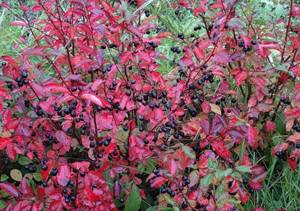
Common cotoneaster.
It is found on mountain slopes, ranging from the North Caucasus to the Baltic states. The shrub is distinguished by its upright and branched structure, and its height reaches two meters.
The ovate-type leaves are distinguished by their smoothness and bright green tint on top. Below, the surface of the leaves is felt. The flowers are white and pink in color, and when they turn into fruits, the color changes to red.
Regardless of the soil type, this cotoneaster will feel great. Stimulation of growth occurs in sunny places. He doesn't mind the harsh winter frosts. Ripe fruits can delight with their decorative appearance until autumn.
When planning to create a hedge of cotoneaster, this variety can become a bright decoration for it.
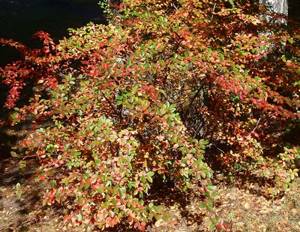
Cotoneaster horizontal.
It originates in Central China and is a mountain-growing shrub. This cotoneaster grows just as it is called, that is, horizontally. The height of the bush can reach up to 50 meters. Its branchy shoots are pressed to the ground.
It has miniature, rounded leaves that are green during warm periods and turn purple in the fall.
Horizontal cotoneaster is very picky about the type of soil. It is characterized by accelerated growth and has the habit of growing in width, which is not limited to a diameter of one meter.
The vegetative period of the bush begins in May and ends in June. Flowers can be single or paired. The fruits are spherical in shape and reach a diameter of no more than 5 millimeters. Their main difference is their shine and bright red hue. They appear in September, but for several more months they will be an excellent addition to this ornamental plant.
Due to its magnificent color and ideal aesthetic properties, this cotoneaster is the most common species. The most widespread applications: cascade gardening, rock gardens and slope strengthening.
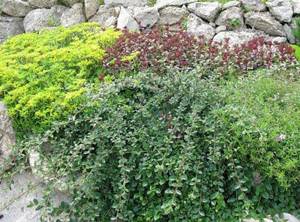
Dummer cotoneaster.
Found in central China in forested areas. The shoots of this variety take root and are moderately pressed to the ground. The branching reaches 20 centimeters in height and more than 1.5 meters in width. The leaves become leathery and have a bright green color. Their size does not exceed two centimeters in length.
With the beginning of autumn, the first fruits appear, which delight with their coral-red coloring. As time passes, the leaves begin to turn purple, which, combined with the bright fruits, creates an original decorative decoration.
Seeds, cuttings and layering can be used for propagation. It is distinguished by its rapid growth, especially on sandy soil, as well as its preference for sunlight and copes well with drought. Does not experience problems with low temperatures even when under a layer of snow.
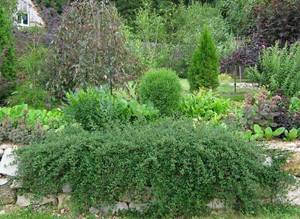
Hybrid cotoneaster Coral Beauty.
The branched shoots and small size of this variety of cotoneaster are its main recognizable feature. The flowers are extremely small and white in color. The period of rapid flowering begins in May and ends in June.
The fruits are spherical in shape and colored red. They can be used for birdseed. The beginning of fruit ripening is late August-early September.
It can do without sunlight, but it allows for faster growth. The hybrid cotoneaster is well prepared for winter frosts. The soil can be anything, even oxidized, but it feels best in moist and fertile places.
Cotoneaster Coral Beauty can be an excellent addition to the garden interior and can be used as a ground cover element for the lawn. Many people use this cotoneaster to create all kinds of decorative decorations for borders and hedges.
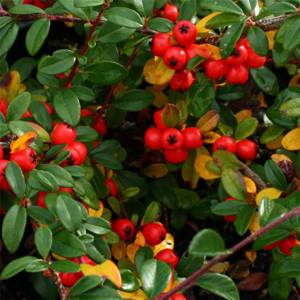
Cotoneaster aronia
This species can be planted and grown in mid-latitudes, because... well resistant to low temperatures. Compared to other species, this is not only an ornamental plant, but also a fruit plant. The fruits of the species are edible. The bush grows no more than 2 meters in height. Its stems are distinguished by a reddish-brown color, on which small blackish berries grow. The leaves of cotoneaster aronia are medium sized, about 4.5 cm long, ovoid. The leaves have an interesting color: they are rich green on top and white felt on the back. The tip of the leaves is blunt or notched. Fruiting begins in the fifth year from the moment of planting and occurs annually. Cotoneaster inflorescences are brush-shaped and have from 5 to 12 flowers. The flowering period lasts about a month. The bush is unpretentious in care, resistant to drought and low temperatures. Also, this species is used not only for decorative or fruit purposes, but also for creating pipes, canes, etc. There is an ornamental subspecies, laxiflora, whose inflorescences are drooping and the fruits are large. It was cultivated in 1829.
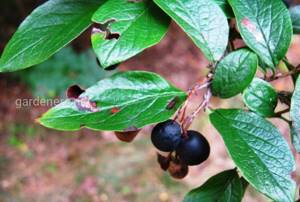
What to watch out for in cotoneaster
Despite its resistance to all kinds of diseases and pests, you should regularly look closely at the foliage and shoots of cotoneaster in order to remove damaged elements in a timely manner.
The first enemy of cotoneaster is the green apple aphid. The first signs of infection: the leaves begin to wrinkle and the shoots begin to bend. All this can lead to their drying out.
The second dangerous enemy of cotoneaster is the apple white moth. It promotes mining of the leaf, after which patterned passages remain on it, which, although barely noticeable, can cause a lot of problems in the future.
You should also be wary of the cotoneaster mite, plum sawfly and scale insect. They are harmful not to all types of cotoneaster, but only to some of its species. If you do not pay attention to them in time, the foliage and branches are doomed to dry out.
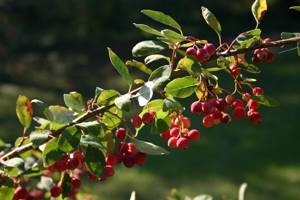
Common cotoneaster
The species is deciduous and can grow on mountain slopes. This species of cotoneaster has been cultivated since 1656, but quite rarely. The bush is medium in size, grows up to 2 meters in height. The crown is dense and rounded. There is fluff on top of the young stems, but it disappears later. The leaves are wide, ovoid, about 5 cm long. The color of the leaves is very attractive: they are greenish on top and felt-gray on the back. The inflorescence is brush-shaped and has up to four white or pinkish-white flowers. Cotoneaster berries are small in size, reddish in color, up to 10 mm in diameter. The species is very resistant to frost, dry weather and gas.
The versatility of using cotoneaster
Landscape design is the main area of application of cotoneaster. Today they create amazingly beautiful decorations for gardens, vegetable gardens, parks and city streets that attract attention for several months. The birds are also happy, because the fruits of some varieties of cotoneaster are an exquisite delicacy for them. Thus, the decorative component of the cotoneaster acquires not only picturesqueness, but also naturalness.
In an attempt to achieve greater uniqueness and double the amount of splendor when using cotoneaster, it is recommended to combine several varieties together. Given their ability to germinate in groups, they can create a more expressive beauty thanks to the distinctive features hidden in each of the cotoneaster varieties.
Cotoneaster can also be considered a useful plant, because its normalized use helps to get rid of a number of diseases of varying severity. Chronic gastritis, epilepsy, nervous disorders, jaundice and scabies - all this is successfully treated thanks to the unique properties of individual types of cotoneaster.
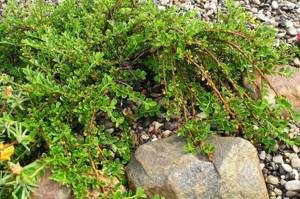
How does the cotoneaster reproduction process occur?
Cotoneaster can reproduce in the following ways:
- Seeds.
- Cuttings (summer and winter).
- Taps.
- Dividing the bush.
Reproduction through seeds.
This method will require incredible perseverance and attentiveness. They are extracted from ripe cotoneaster fruits. Only high-quality seeds should be selected, since only they can start the germination of cotoneaster. After the selection is completed, they must be placed in a container with water. If some seeds float, they should be removed immediately. This means they are not viable. The proportion of such unsuccessful seeds can reach 60 percent.
Be prepared for the fact that the seeds may not sprout immediately. Often you have to wait a whole year. To speed up the process of their germination, it is recommended to use the stratification method. It involves mixing clean sand and peat with seeds, as well as their subsequent moistening and moving them into special boxes or pots. The layer of the resulting mixture should be 30-40 centimeters.
In this state, the seeds should remain until the beginning of spring. It is very important to keep them at zero temperature. Seeds of most cotoneaster varieties require stratification for one or two months. In individual cases, this period may increase from 6 to 12 months.
Important note!
Treating seeds with sulfuric acid for 5-20 minutes can reduce the duration of stratification to one month.
The result of such efforts is as follows: up to a 20 percent increase in seed germination.
There is another way to accelerate seed germination. To do this, it is necessary to prepare the appropriate soil for the seed boxes. It is best to use a mixture of peat, river sand and humus. Their proportions should be at the same level. You can first soak the seeds in water, which will improve their growth.
It is necessary to deepen the seeds within a centimeter, and cover the top with a layer of sand in the same volume. Watering should be done carefully and only with a watering can. Otherwise, the soil layer will be washed away and the seeds will end up on the surface. But this can be easily corrected by further deepening the seeds.
The first periods of germination should be protected from direct sunlight and cold air. To do this, it is enough to use special shields. After seedlings with developed leaves appear, they should be carefully transferred to open ground. This can be done not only next spring, but also at the end of the current season.
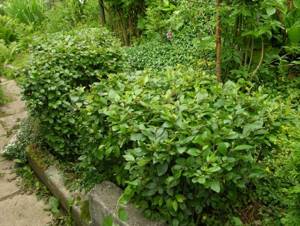
Propagation through green and woody cuttings (summer).
This method has an easier approach. It is necessary to select mature shoots, which should be developed and large. Soft and insufficiently lignified shoots are unsuitable for propagation.
Selected shoots must be cut into pieces up to 15 centimeters long. They must include two internodes. To speed up the process of maturation of the root system, you can use a special solution to stimulate growth, which is created from heteroauxin. To prepare it you will need a liter of water and one tablet of this substance.
The cuttings are planted in prepared glass greenhouses. The soil is created from a mixture of humus soil and sand or a turf mixture. A layer of coarse sand must be poured on top of the soil, which must first be washed well. Its layer can reach 3-5 centimeters.
Before planting the cuttings at an angle of 45 degrees and with a recess of 5 centimeters, it is advisable to water the soil abundantly.
Root growth can vary from 30 to 95 percent. As the cuttings germinate, it is advisable to give them more fresh air. By the beginning of autumn, their roots will be able to get stronger, which will allow them to begin transplanting the cuttings into open ground.
Important note!
The first winter can be disastrous for them. To keep them intact, it is recommended to cover them with spruce branches or leaves.
Propagation through woody cuttings (winter).
It includes several differences compared to summer cuttings. They should be harvested in late autumn or early winter. Until the onset of spring, they should be stored in containers with sand in the basement. After this, they should be cut into 10-20 centimeters, leaving 3 to 5 buds. The method of rooting them remains the same as in the case of summer cuttings.
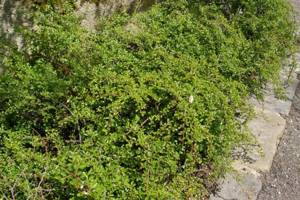
Reproduction through branches.
This method is only relevant for ground cover varieties of cotoneaster. Their shoots adjacent to the ground can become ideal seedlings. To do this, such shoots must be attached with staples and also sprinkled with a small layer of humus. After a while, they will begin to form their own root system.
In the spring, it is necessary to separate the formed bush with a shovel from the rooted shoot. Next, you need to carefully dig it up and plant it in the right place, following the standard rules for planting cotoneaster.
The efficiency of this propagation is extremely high, because as long as the shoot, attached with staples to the ground, is connected to the main bush, it will receive all the necessary nutrients and moisture.
If you leave everything as is, then such a shoot will grow dynamically, covering a significant area of the site and will become an original alternative to a grass lawn.
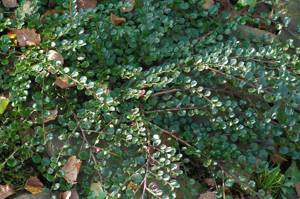
Reproduction through dividing the bush.
The simplest and most effective method of propagation. If you already have an overgrown cotoneaster bush, then it is enough to divide it into several parts, which can live their own lives in a pre-prepared area.
Their root system will already be quite developed, and they will be able to take root in a new place very quickly. Dividing an adult bush can be done in spring and autumn.
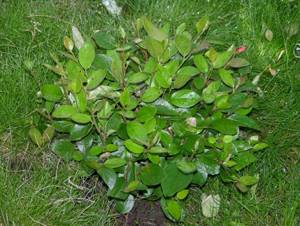
Planting Dummer's cotoneaster
Dummer's cotoneaster is an unpretentious plant in terms of planting and care. Planting is done with seedlings. The procedure is carried out in the spring, but it can also be done in the fall. When planting in autumn, it is important to do it before frost, preferably during leaf fall.
Dummer's cotoneaster is a sun-loving plant that tolerates open sun well.

The landing algorithm is as follows:
- You need a hole 50 cm deep and the same width.
- Brick or pebbles are laid on the bottom for drainage.
- A layer of earth is poured onto the drainage. It should consist of peat, humus and sand. If necessary, you can add 200 grams of lime.
- Place the seedling in the prepared hole and bury it.
- The distance between seedlings is 50 cm.
When planting, the root collar should be flush with the surface. Experts recommend mulching the surface near the bush with an 8 cm layer of peat. If the bush is to be used as a hedge, then it must be planted in trenches.
Dummer's horizontal cotoneaster does not tolerate excess moisture well, and therefore when choosing a planting site it is necessary that the depth of groundwater be at least two meters.
Useful tips for caring for cotoneaster
Almost all types of cotoneaster do not require specific care, but some recommendations must be taken into account.
Useful tips:
- With the arrival of spring, when serious frosts have receded, the soil needs mineral fertilizers. This may be urea, which should be diluted in water. 25 grams per bucket of water is enough.
- Before the first flowers appear, it is necessary to fertilize each square meter of soil with 15 grams of potassium sulfate. Instead, you can use 60 grams of granulated superphosphate.
- It is recommended to regularly monitor the cleanliness of the soil by removing weeds.
- The regularity of watering should be set to several times a month, and its intensity should be ensured at 6-8 liters for each cotoneaster bush.
- Trim the bushes from time to time. Use your imagination and make it unique. The cotoneaster will not suffer from this in any way.
- Some types of cotoneaster may need additional protection from winter frosts. To do this, mulch the soil with peat and bend down the branches of the bush.
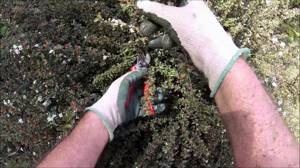
Cotoneaster vesica
The species is deciduous, the bush grows upright and develops to a height of up to three meters. The leaves of cotoneaster vesica are small, wrinkled, greenish in color, turning into rich red in autumn. The fruits of the bush are red and grow on long petioles. This species is used for decorative purposes, because It greatly decorates any planting, making it more attractive and neat. In the autumn, when many plants wither, the cotoneaster bush decorates the garden with its foliage, which combines beautifully with berries.
